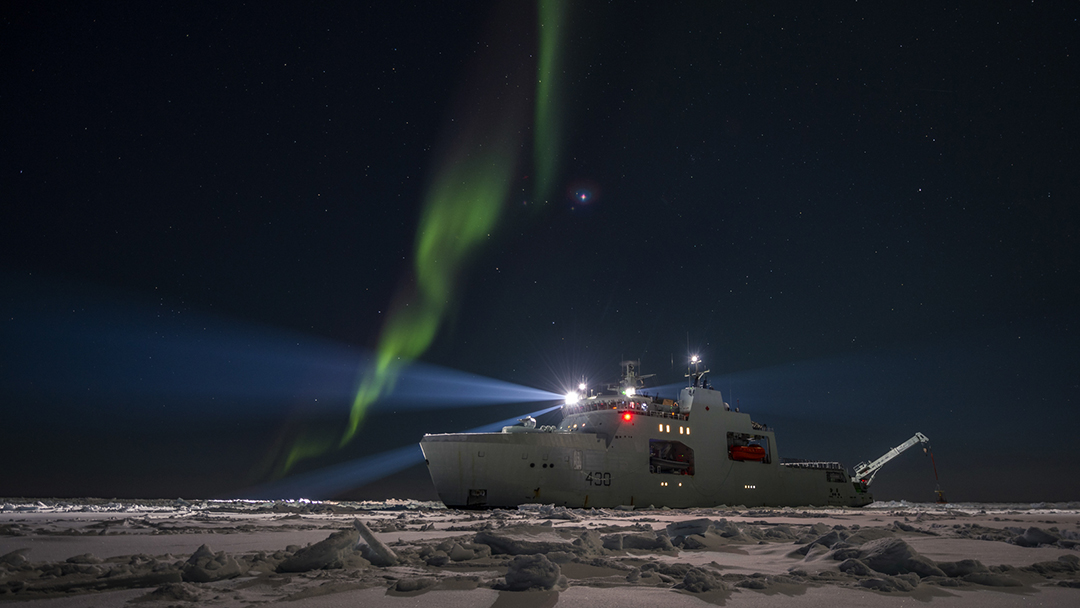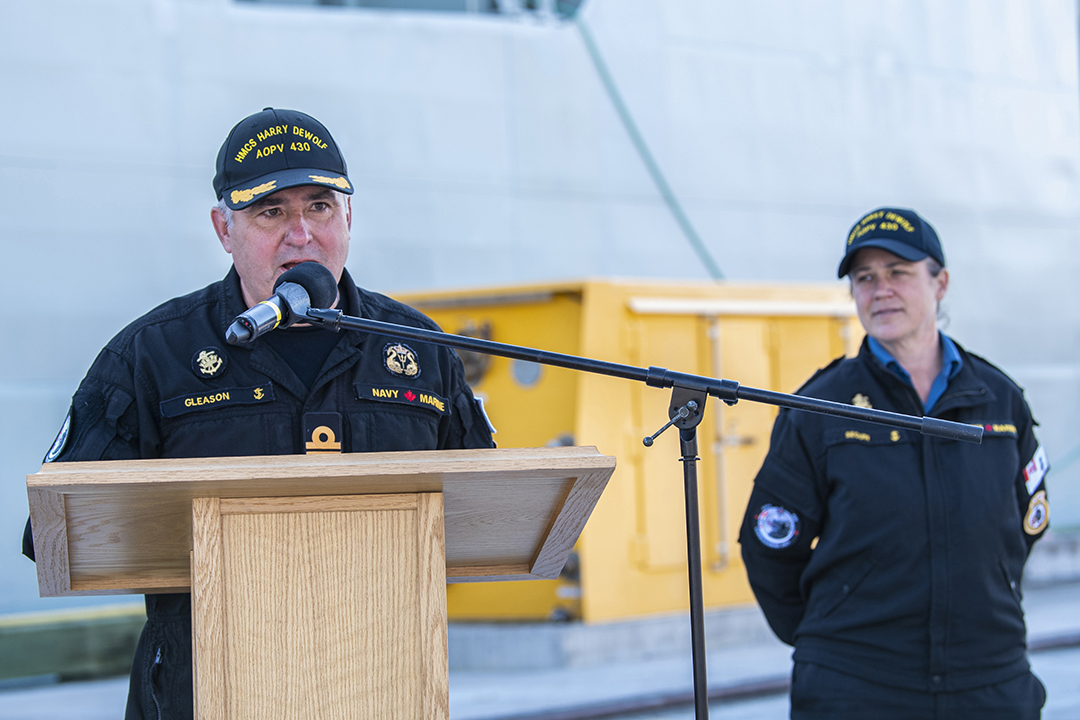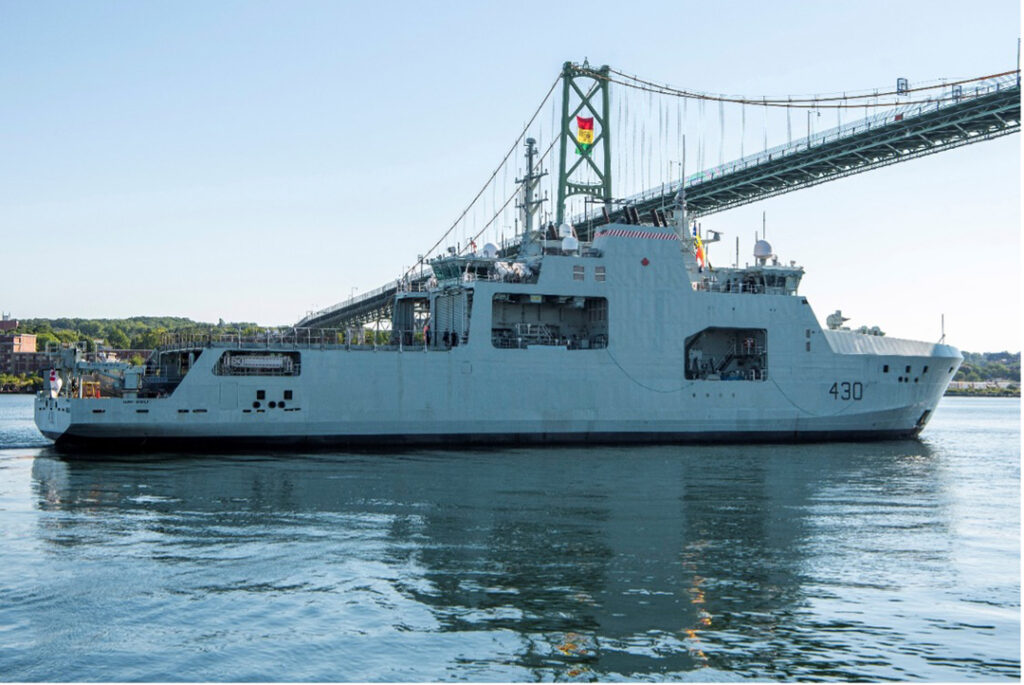THE WATCH staff
A newly commissioned Royal Canadian Navy (RCN) ship — the HMCS Harry DeWolf — is on a maritime odyssey to circumnavigate North America.
The Arctic and offshore patrol ship, pictured, left Halifax, Nova Scotia, on August 3, 2021, for its first operational mission that will take it through the Northwest Passage and eventually into the Eastern Pacific and Caribbean Sea, where it will support U.S.-led counter-narcotics operations while on its four-month deployment.
“This is a mission that fully demonstrates the capabilities of our ship and the new capabilities of the RCN. This goes far beyond just focusing on sovereignty in the North — we’ll be doing all that this class of ship can do,” said Rear Adm. Brian Santarpia, commander of Maritime Forces Atlantic, according to an August 10 RCN news release.

The mission is also being conducted to promote interoperability with ships of the U.S. military and allies, as well as to forge relationships with Indigenous Inuit communities in the Arctic and show a “more resolute presence in the Northern Region,” according to the RCN.
The 339-foot-long Harry DeWolf, named after one of the most accomplished Canadian naval officers of World War II, is the largest Navy vessel built in Canada in more than 50 years, according to the RCN. It is the first of six in a new class of ice-capable patrol ships that feature space for small boats, a vehicle bay for trucks, ATVs and snowmobiles, and a helicopter pad large enough to handle the CH-148 helicopter, according to an RCN fact sheet.
Already on its voyage, the Harry DeWolf has taken part in a mass-rescue exercise in the Arctic in conjunction with Canadian and U.S. coast guard vessels.
In addition to a limited icebreaking capability, the Harry DeWolf has enclosed decks, which are key for Arctic operations. However, the ship is also designed to operate in warm climates.
“To support Canadian security and sovereignty, we need to be able to operate pretty much anywhere,” Canadian Armed Forces Maj. Mark Gough told the Nunatsiaq News newspaper on August 12.

Cmdr. Corey Gleason, commanding officer of the Harry DeWolf, said the visits to Indigenous communities in the Arctic are a key component of the mission. “I really look forward to expanding those relationships, and I personally have some very big ambitions when it comes to expanding the range of military programs in the region,” Gleason said in an August 10 RCN news release, describing a scenario that could see locals on Canadian ships.
“We like to look at charts with numbers and depths; when we go north, we don’t have that,” Gleason said of the region that still is not surveyed well. “Our Inuit partners know those bodies of water, and they can help us operate much more safely,” he added, according to the news release.
The harshness of the Arctic environment was illustrated for the Harry DeWolf when it weighed anchor September 1 off Beechey Island in the Canadian territory of Nunavut.
According to a Twitter post from Chief Petty Officer 1st Class Ginette Seguin, the crew members “had the rare opportunity to pay their respects” at the site of Franklin’s Lost Expedition, where the British Navy’s HMS Erebus and HMS Terror disappeared in 1848 while searching for the Northwest Passage.
IMAGE CREDITS: CANADIAN DEPARTMENT OF NATIONAL DEFENCE

